Everything
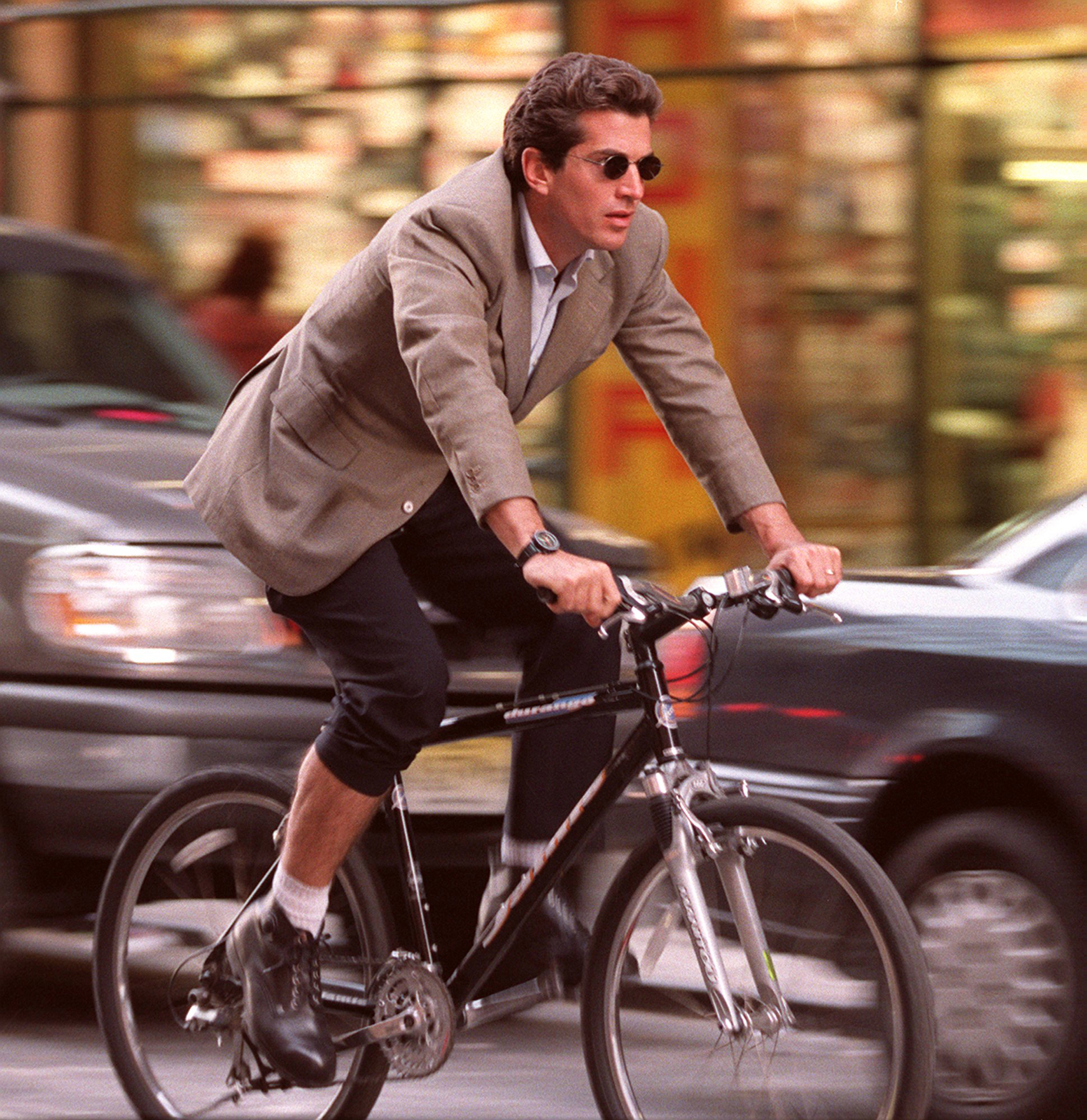
This week marks twenty-two years since JFK Junior and his wife died in a plane crash, continuing the infamous Kennedy curse.
On the evening of July 16, 1999, JFK Junior boarded a plane headed for Martha’s Vineyard – the plane would never arrive. Twenty-two years after the fateful journey, the Kennedy legacy continues to loom large over US politics. While QAnon conspiracy theorists believe that John F. Kennedy Jr. and his wife are alive (naturally), it’s hard to imagine a story more defined by death and misfortune than that of John F Kennedy Junior.
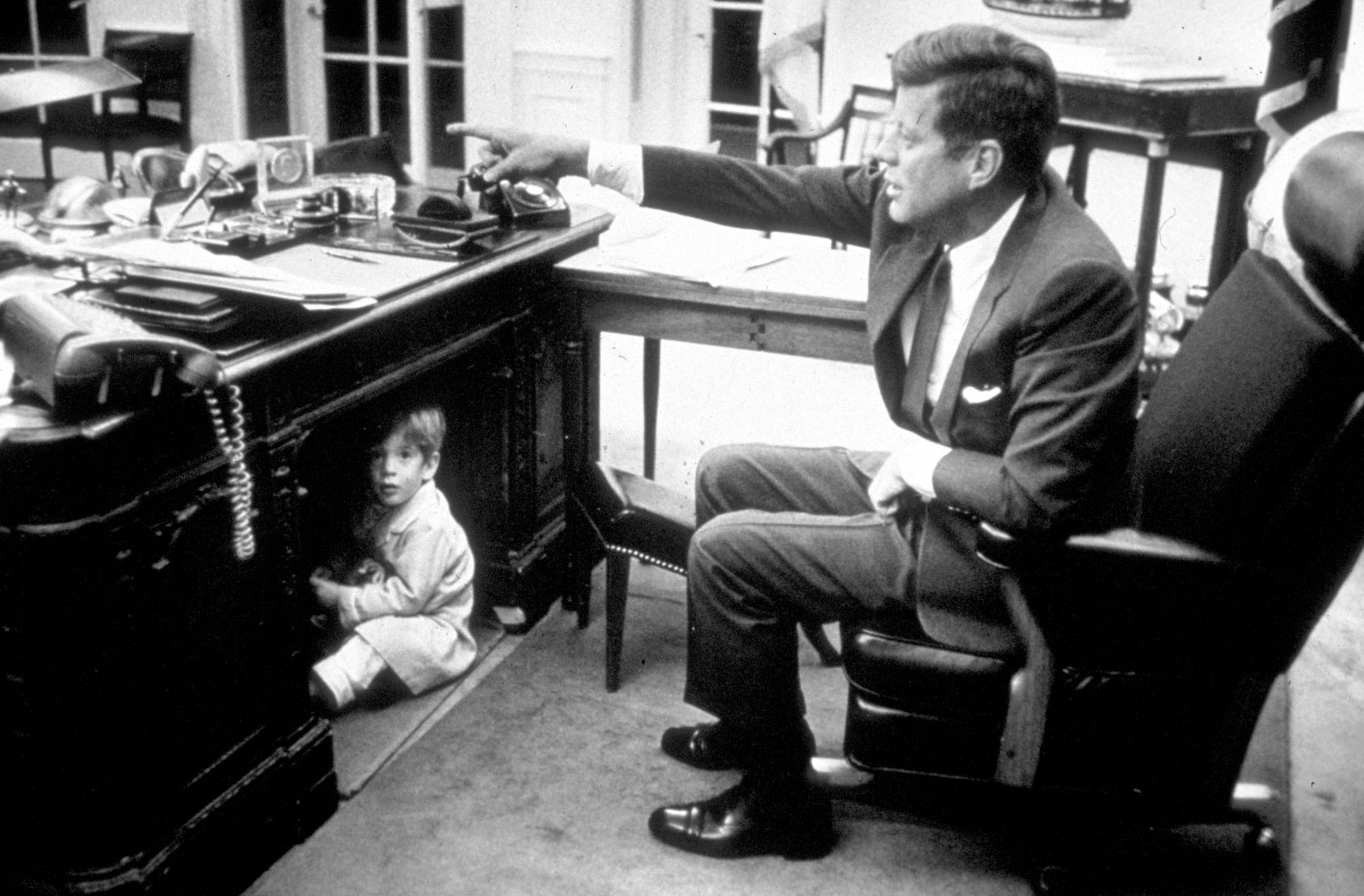
A youth spent overshadowed by the assassination of a US president – his father – and adulthood cut short by fiery wreckage. But in the brief, thirty-eight years before his passing, JFK Junior, or John-John as he was affectionately known, would make his own mark on the world.
A Birthday and a Funeral: Growing up in grief
It remains one of the most heartbreaking images of the 20th century. A little boy dressed all in blue, stands in front of a coffin. Inside lies his father, John F. Kennedy, the beloved 35th president of the United States of America. The little boy walks forward, takes another step and salutes. It is 25th November 1963, his third birthday.
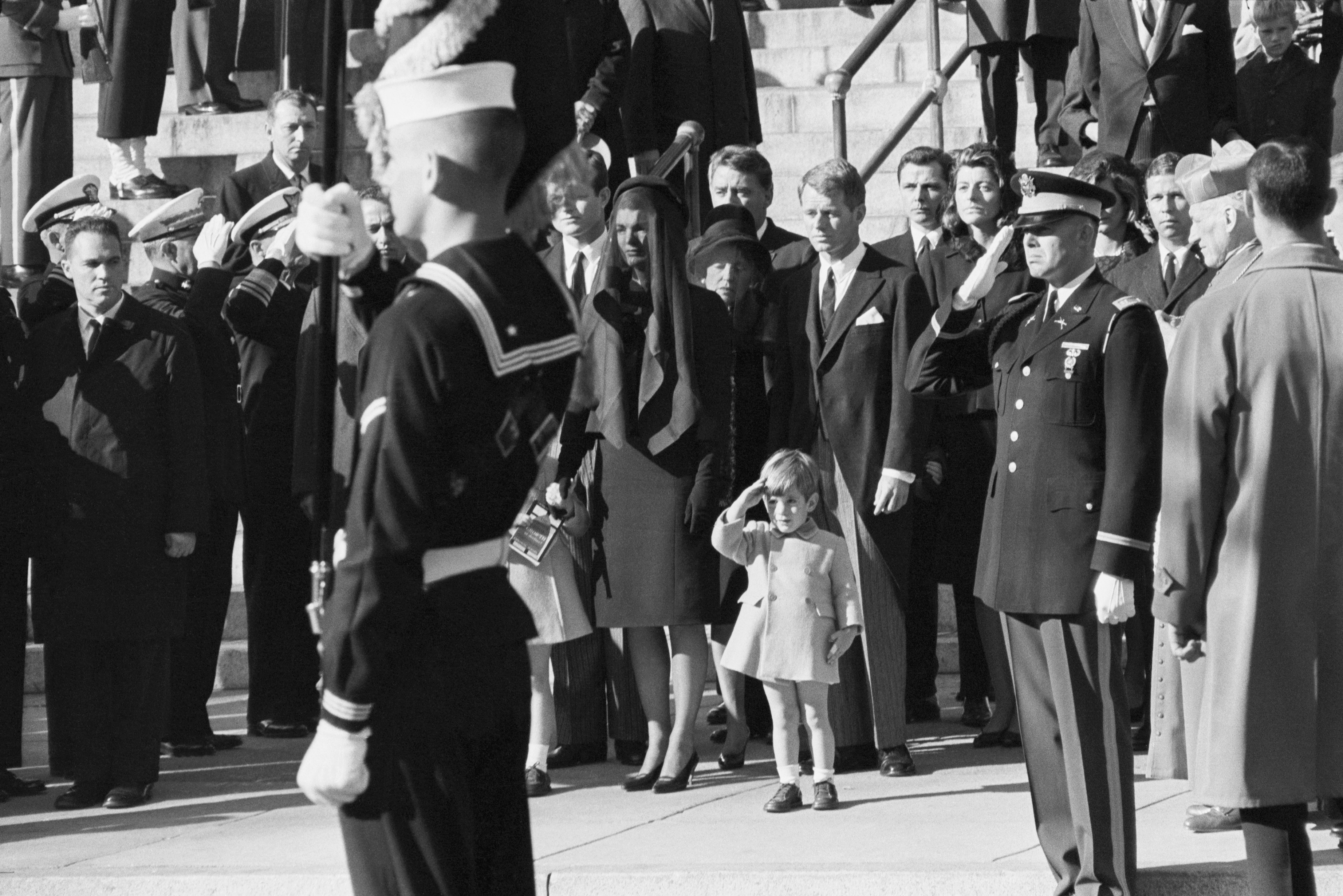
It seems almost prophetic that JFK Jnr’s life began in front of the cameras, the flashing light bulbs a permanent fixture since the day arrived. Growing up in the White House, it’s hardly surprising that the public had a fascination with JFK Jnr. But after the death of President Kennedy, JFK Junior became a symbol of what was left behind, a symbol of hope.
“Practically everyone in America who viewed the funeral of President John F. Kennedy on television or saw the picture in the newspapers felt a poignant identity with the fatherless child,” wrote Kennedy family biographer, Laurence Leamer in Sons of Camelot: The Fate of an American Dynasty.“It was an indelible image, forever frozen in that moment.”
While the public may have wished to his pause on John-John, to freeze him ‘in that moment,’ an innocent boy farewelling his father, the reality was life had to move on for the Kennedy’s. The family relocated to New York and then, in 1968, JFK Jnr’s mother, Jackie, famously remarried, tying the knot with Aristotle Onassis, the Greek shipping powerhouse.
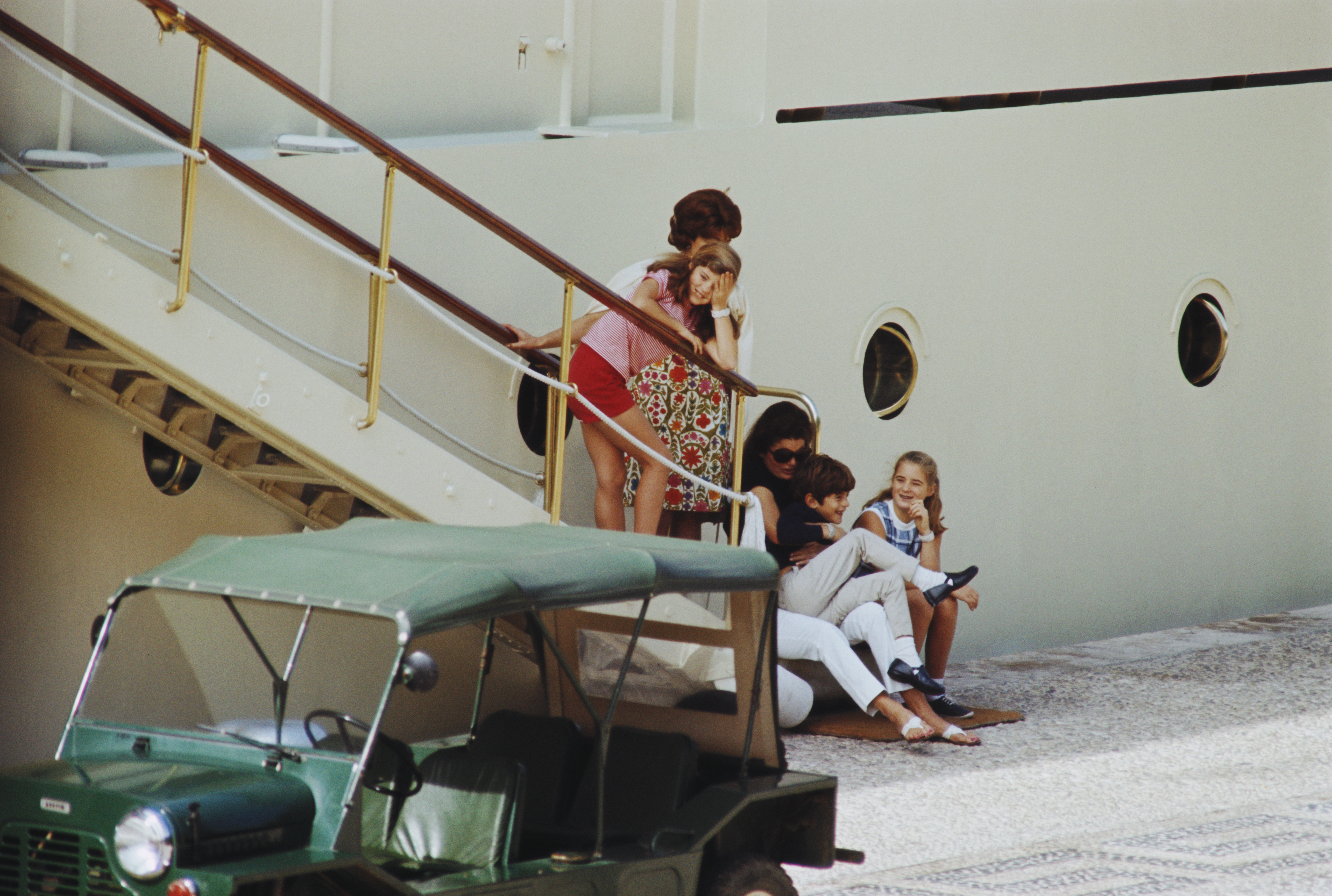
With his mother doing her best to start a new life in Europe, JFK Jnr remained in New York determined to discover who he was away from the burden of his family. The first major step was enrolling at Brown University in 1979, rather than Harvard, the school of choice for the Kennedy clan. Despite pursuing interests that were far from that of his father – namely, avoiding politics – it’s clear that the pressure of being the president’s son was not easy to shake.
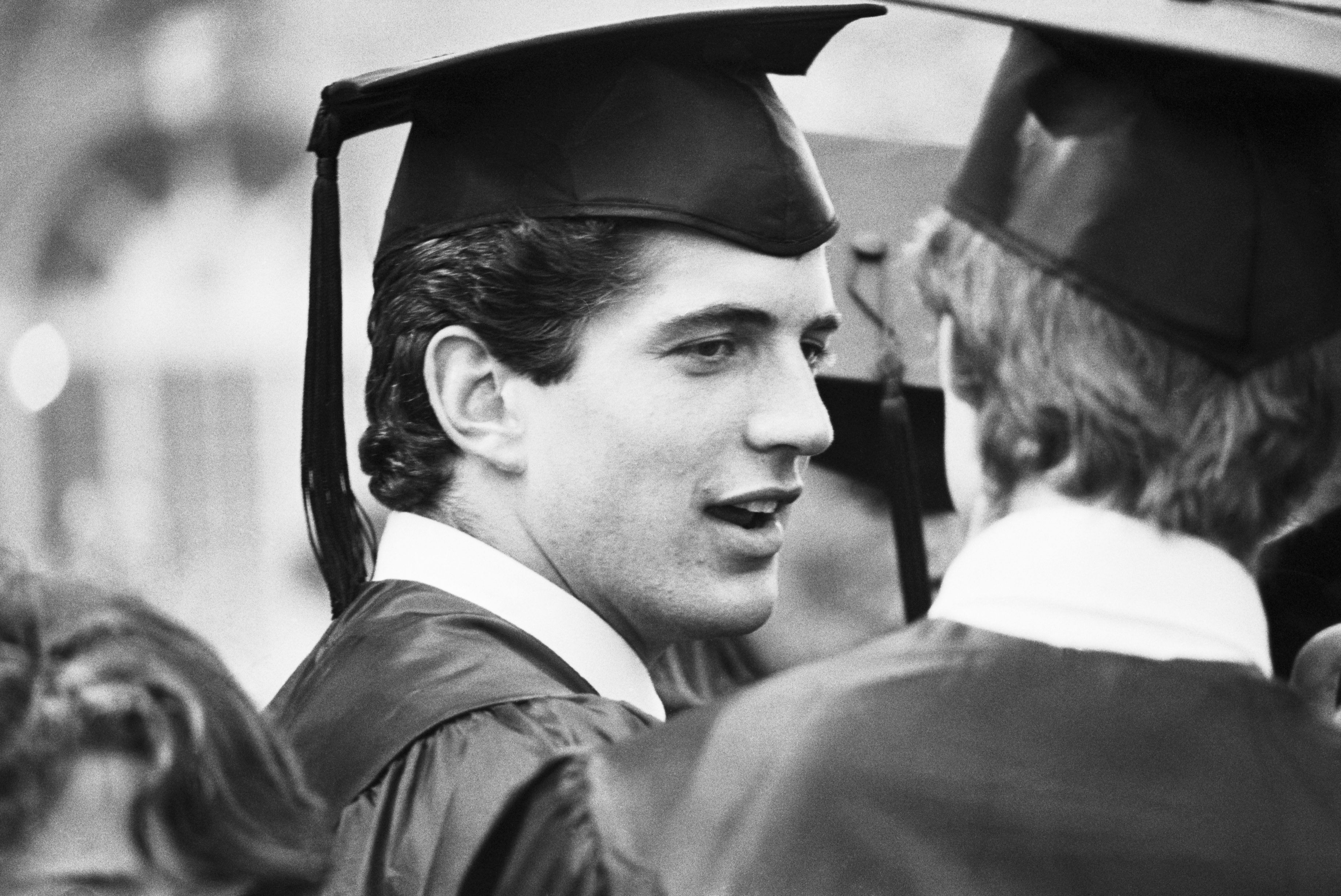
Law of Attraction: Career, celebrity and love in the limelight
With rugged good looks and natural charisma, as John-John grew into a man, the comparisons with his father grew louder. It also didn’t hurt that he shared the president’s penchant for glamorous girlfriends. While JFK kept Marilyn Monroe as his movie star mistress, his son developed relationships with several high profile women.
After finishing up at Brown University, John shifted his focus to law, earning a degree from the New York University School of Law in 1989. As he pursued a career as a prosecutor, there was a sense that since John had come of age as a man, he was fair game for the media.
The cult of celebrity that he inherited from birth reared its ugly head once more. The press gave him no relief when he failed the New York Bar exam – twice. Newspapers ran the headline “The Hunk Who Flunked” with JFK Jnr telling reporters, “I’m clearly not a major legal genius.”
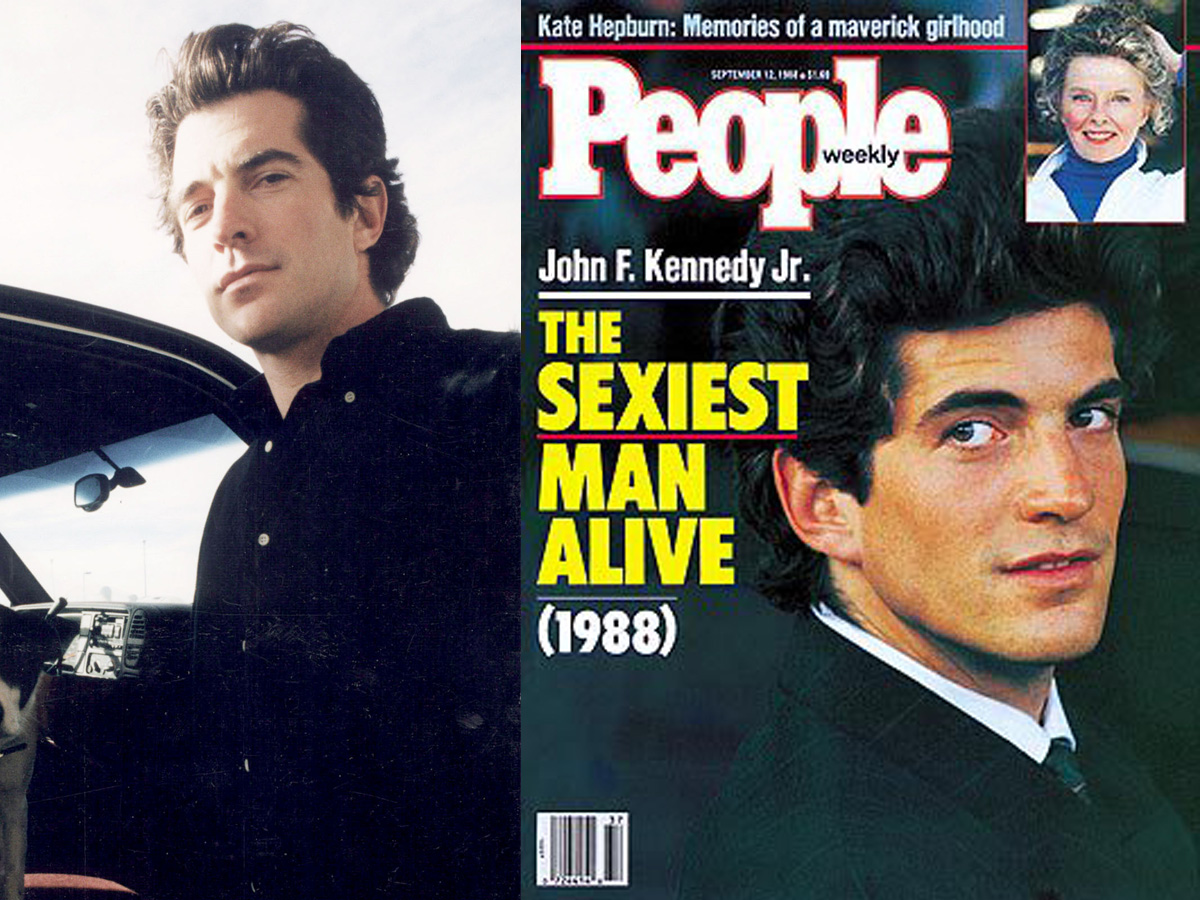
While his law career stuttered, John-John had better luck with the ladies, especially after being named People Magazine’s “Sexiest Man Alive” in 1988. The Kennedy son was hot property and he promptly found himself in a revolving door of relationships through the late 80s and early 90s.
Madonna, Brooke Shields, Cindy Crawford, Sarah Jessica-Parker and Daryl Hannah all dated JFK Jnr at one point or another, proving valuable fodder for the tabloids.
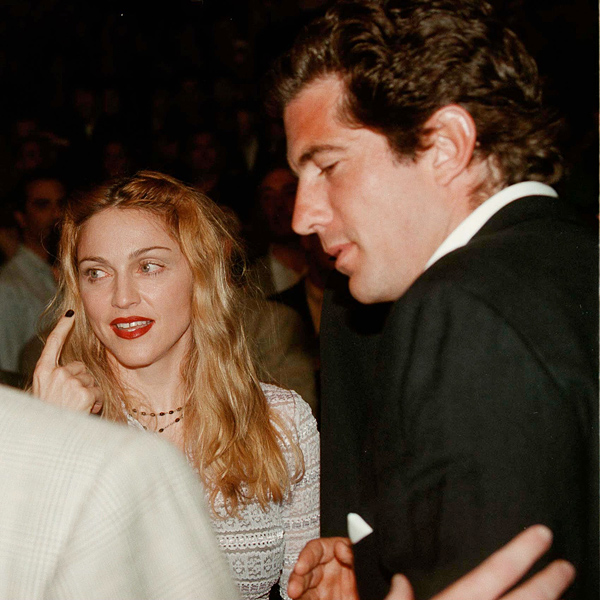
GEORGE MAGAZINE
By the mid-90s, JFK Jnr had drifted from the law and started writing, working on stories for the New York Times while travelling. In 1995 he hedged his bets on the publishing, starting GEORGE Magazine, a glossy monthly that bridged the gap between politics and the people. Who better to tackle such a project?
The first issue featured John’s then-lover, Cindy Crawford, on the cover dressed provocatively as George Washington. The magazine was a passion project for John-John, who conducted many of the interviews himself, becoming both a face and the beating heart of the publication.
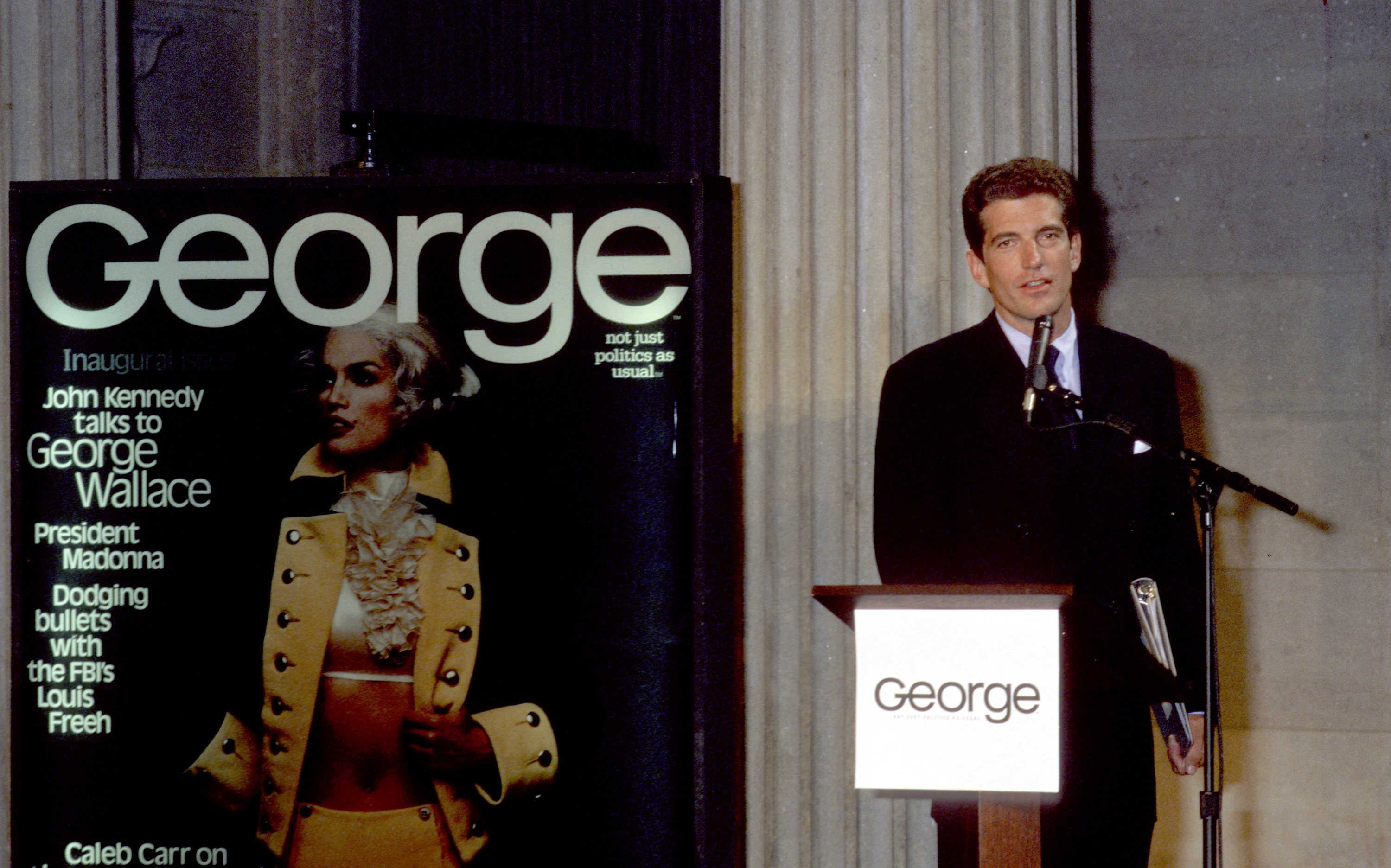
The daily running of GEORGE signalled a period of stability for the playboy, which was further bolstered when he met Carolyn Bessette in 1995. Carolyn was a publicist for Calvin Klein and the pair, who ran in similar New York circles, fell hard and fast.
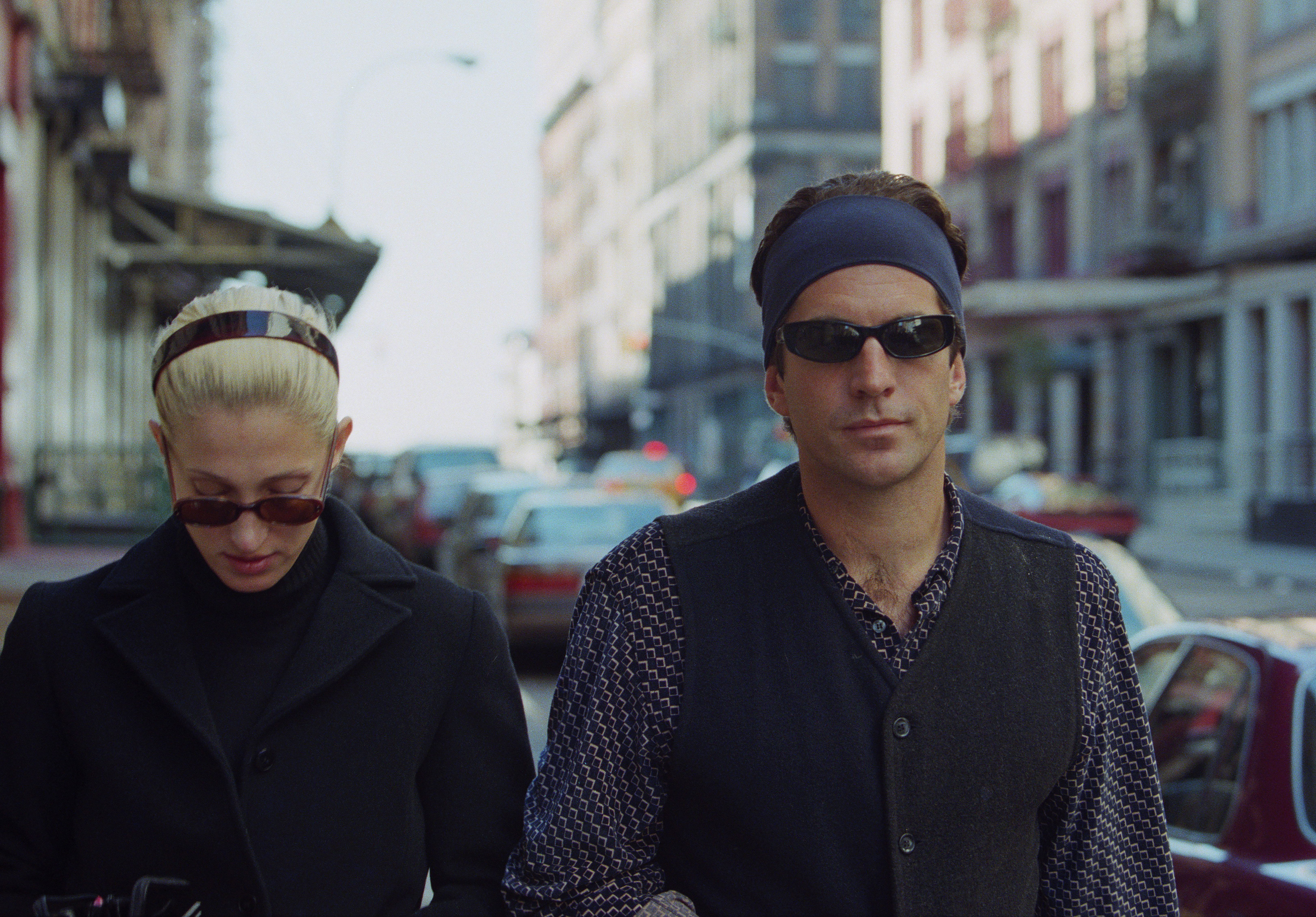
By 1996 they were married in a secret ceremony, the only son of a slain president finally finding his happily-ever-after.
For Carolyn however, it didn’t take long for the reality of life as a Kennedy to take hold, she was hounded by the media, her every move scrutinised. “She couldn’t take it. She wasn’t brought up with it. John was, Carolyn wasn’t,” Jackie Kennedy’s personal assistant Kathy McKeon McKeon wrote in her book, Jackie’s Girl. “She told me, ‘I’m terrified of them.'”
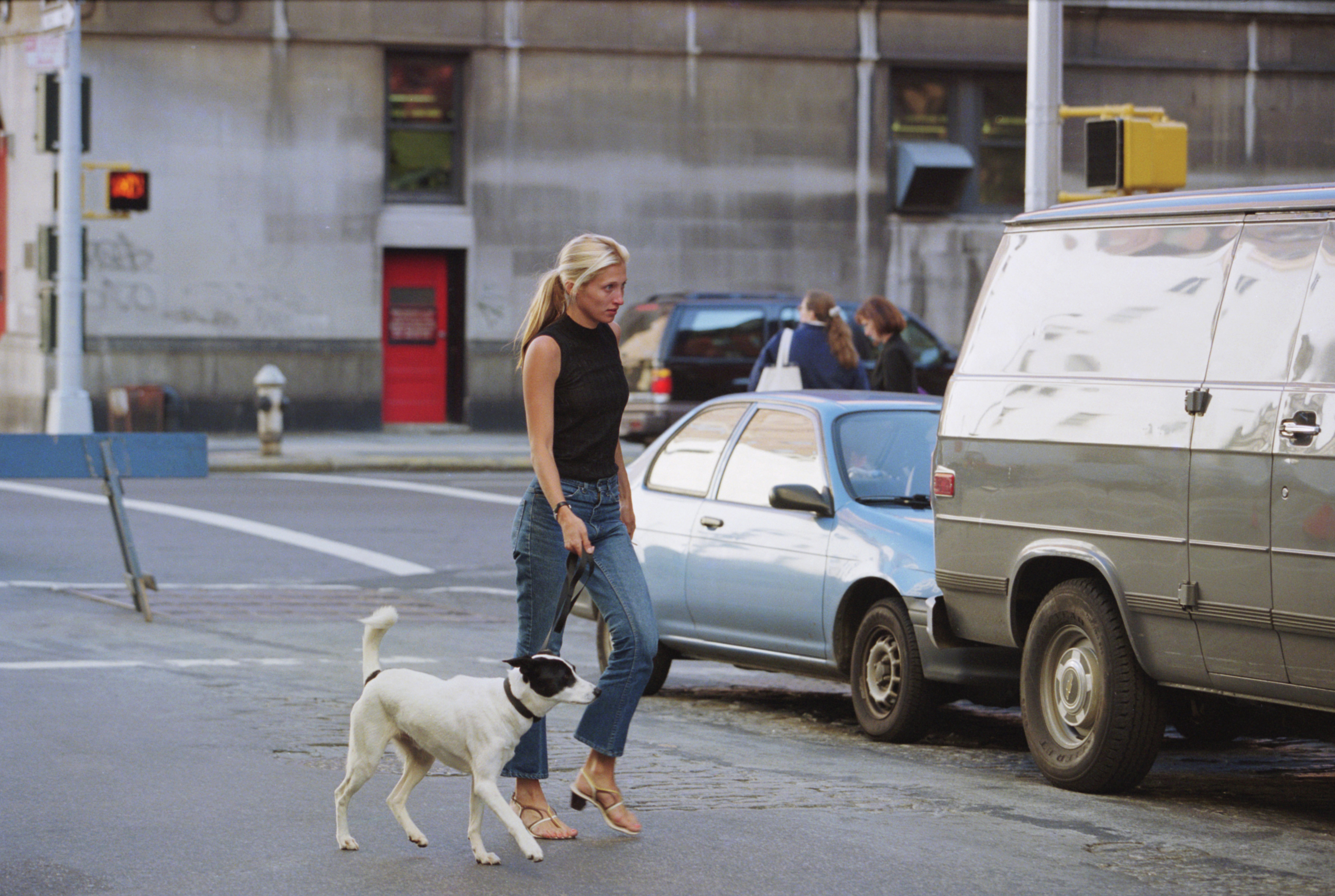
Unfortunately, for both Carolyn and JFK Jnr, the worst was yet to come.
The Kennedy Curse: Death and Mourning
On the evening of July 16, 1999, JFK Jnr was due to attend the wedding of his cousin, Rory. Joining him inside his six-seat Piper Saratoga plane were his wife, Carolyn and her sister, Lauren. They were headed for Martha’s Vineyard, they would never make it.
It was a Friday night and the weather was far from ideal, rain, wind and fog, an unholy trinity.
At the Essex County Airport in New Jersey, where JFK Jnr kept his plane, his usual co-pilot, Kyle Bailey, was concerned. He too was meant to fly to Martha’s Vineyard but decided against it, citing the weather. John-John arrived and announced he still intended to go up.
As the trio made their journey towards Martha’s Vineyard the conditions worsened. The last official radar signals captured from the plane came in at 9.34 in the evening. They showed Kennedy 25 kilometres from the airport, at an altitude of 1,100ft, flying away from Martha’s Vineyard. By now, the plane was nosediving at 4,700ft per minute.
John was suffering spatial disorientation, his mind playing tricks on him. It’s a common condition where the pilot becomes unable to distinguish between reality and the imagined. Consumed by panic in the cockpit, John piloted the plane into the depths of the sea, the six-seater ripped apart on impact.
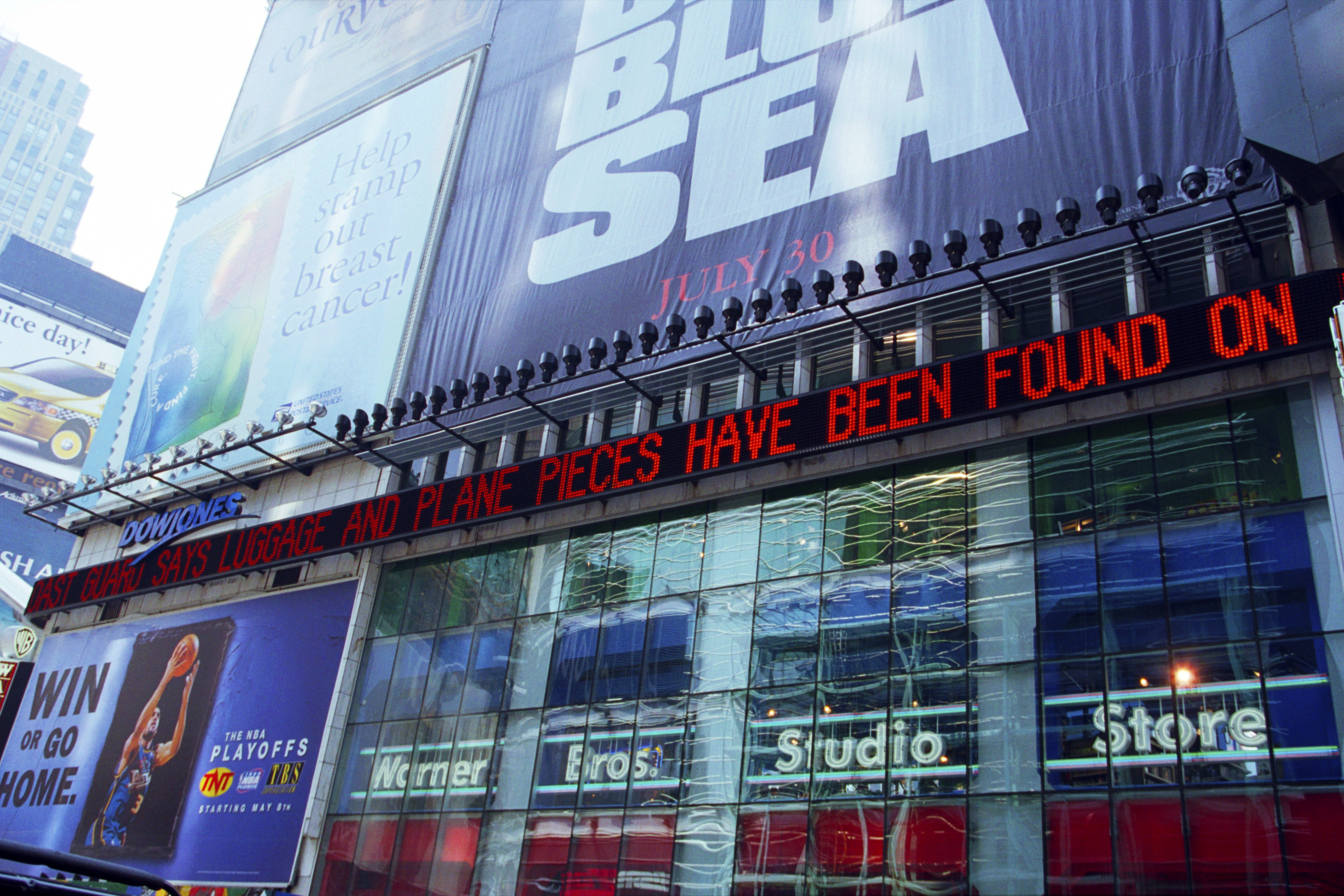
In a single moment, another tragic chapter of the Kennedy story had been written. The lives of John-John, Carolyn and Lauren extinguished by the vast Atlantic ocean. JFK Jnr was just 38-years-old, eight years his father’s junior at his time of death.
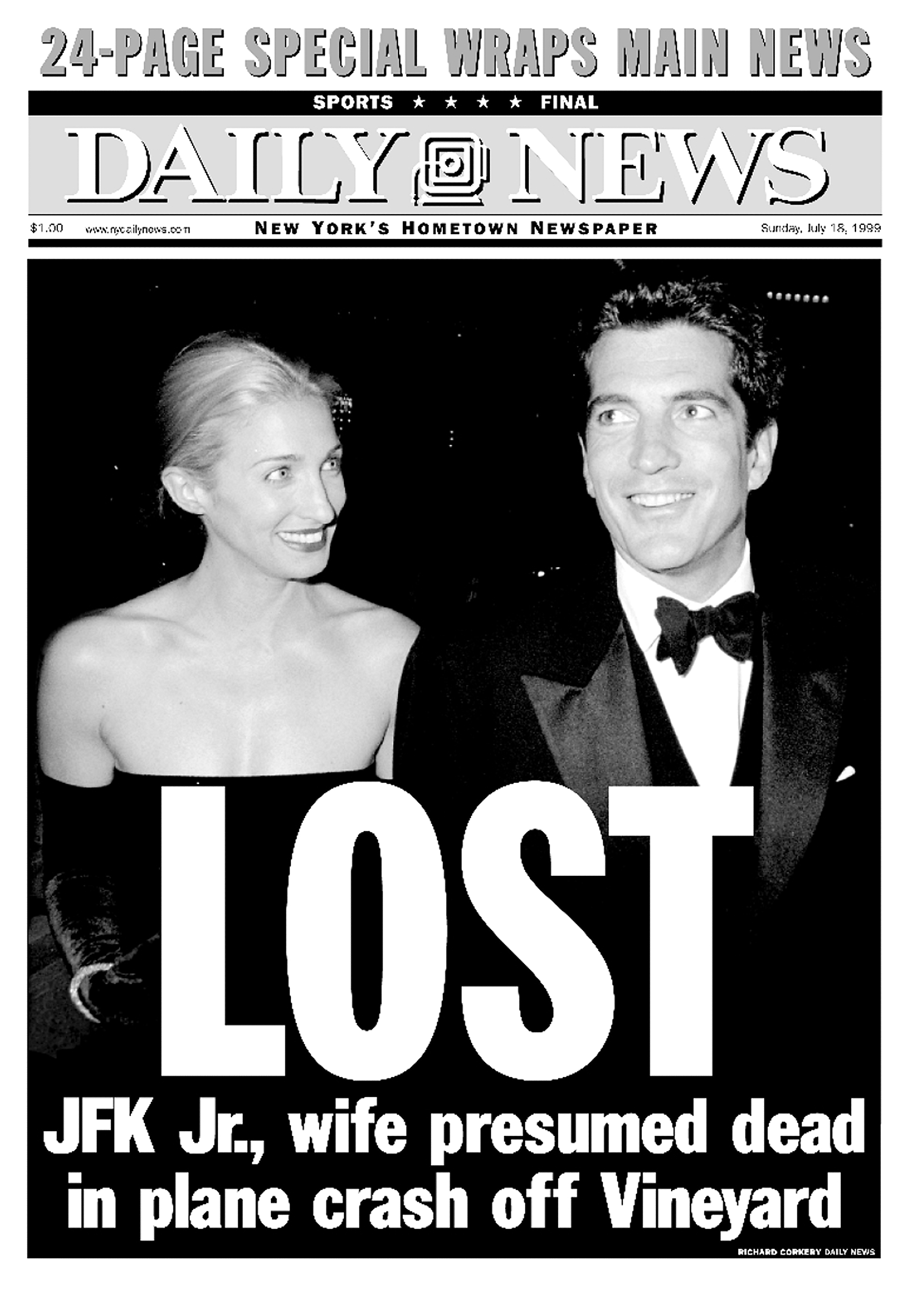
On 22nd July, six days after the crash, JFK Jnr, Carolyn and Lauren were returned to their final resting place. On board the deck of a Navy destroyer, the USS Briscoe, close friends and family watched on as their ashes were scattered at sea.
It was a funeral that felt painfully familiar, another Kennedy was gone, another Kennedy taken too soon.